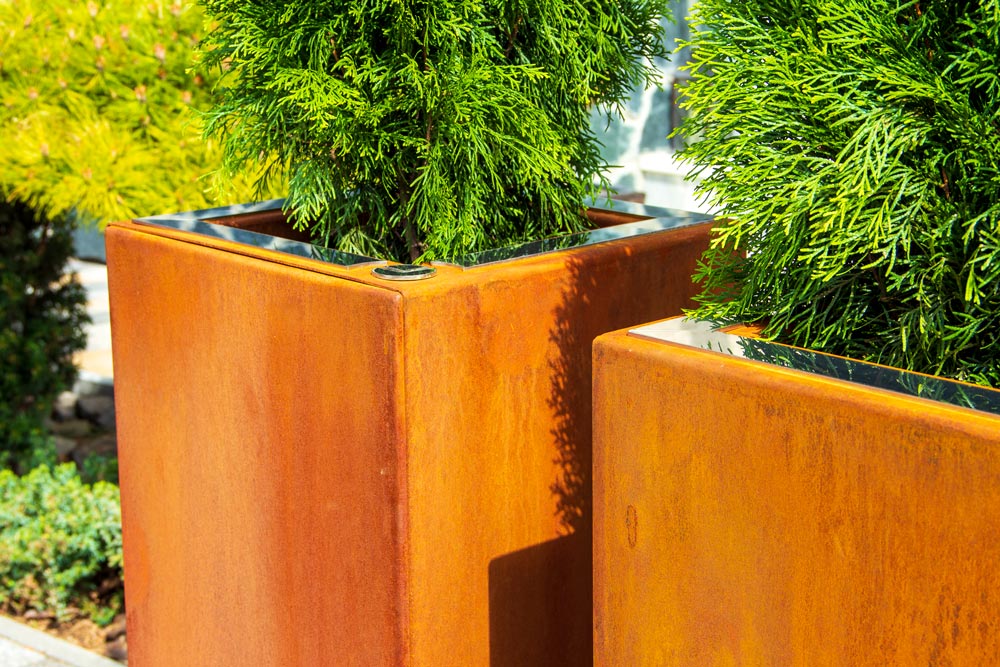Is rust pure negligence or beauty?

You drive along the highway at high speed and you are enjoying the trip. Suddenly you see rust. A pile of rust. Which stupid installed an anti-noise from such horrible fake material? Last time it was silver, and today, when I go to the village to get my stuff after a month, it is all rusty. Well, it will be a pain again; I’ll pay this expensive repair from my taxes. You complain, tap your forehead and continue in your journey. You probably won’t even think that the rusty plate they put there is the best they could have done. Don’t you believe it? So let’s take a look together what is the story of the rust.
The story of rusty sheet metal began to be written in 1933 in the USA, where this special steel was first patented under Cor-ten (corrosion-resistant products). As the name suggests, this steel stubbornly resists weather conditions. But how does it work? In essence, it is low-alloy steel, which means that it has a very low content of carbon and other impurities. The Corten creates a durable patina thanks to the added copper and phosphorus. When reacting with air, a protective layer of rust is formed, which is not porous, like ordinary rust, but is solid and does not allow adverse weather conditions to other layers of the product, thus preventing the overheating itself.
After demonstrating its amazingly durable properties, Corten quickly gained popularity and practical use wherever rusting iron structures were undesirable and maintenance costs reached astronomical heights. It, therefore, began to be used as the primary building material on industrial buildings, bridges or shipping containers. By the way, did you know that steel with very similar properties was also produced in our country, Czechoslovakia? That’s right, production began in 1968 and this locus was named Atmofix.
To better explain how Corten works, think back to vacation at grandma in the countryside, where you had to paint an iron fence or a gateway as punishment for being caught in the act while doing something terrible. Before that, however, it had to be “cleaned”, then painted with anti-corrosion paint, and only then could you paint the fence with the color you wanted to have on the fence. This work was quite useless; the rust was present even behind your ears and to wait until the first layer finally dries was endless. Two or three years were enough and the fence had to be repainted because the paint gradually peeled off and rust was everywhere again. It went on like this until the grandparents said they would instead buy a concrete fence and it could be the end of the story.
If they had a fence from Corten, they could also skip the concrete. On the other hand, Corten has the advantage that the protective layer of rust is constantly renewed and thus protects the product over the years. Corten products are thus virtually maintenance-free in our geographical conditions and considered to be almost eternal. In addition, this patina changes its color over time and thus becomes an attractive addition to the garden.
The only disadvantage of this steel is that it also needs dryness to stabilize the protective layer so that the rust formed can dry and stabilize. Therefore, it is not suitable for use in coastal countries or subtropical zones where the air humidity is too high. Rust formation does not stop and stabilize, but the corrosion process continues further until eventually Corten completely goes too rusted.
An example of such an unfortunate use of Corten is (actually was) the Omni Coliseum in Atlanta, which lasted only less than 25 years than expected and became the subject of a controlled demolition due to the resulting state of emergency. However, there is no such threat in our climate zone, which is why Corten steel is an ideal material for our gardens and terraces. Unless your neighbor owns a rainforest or lives in wetlands, in this case, we recommend stainless steel garden furniture.
Put it in a nutshell and underlined, Cor-ten is:
- completely maintenance-free
- saves money and valuable time
- each piece is original with its color and drawing
- its products are multifunctional, durable and practically indestructible
So what do you think? Would you give a chance to have rust in your garden as well?


 Slovenčina
Slovenčina Deutsch
Deutsch